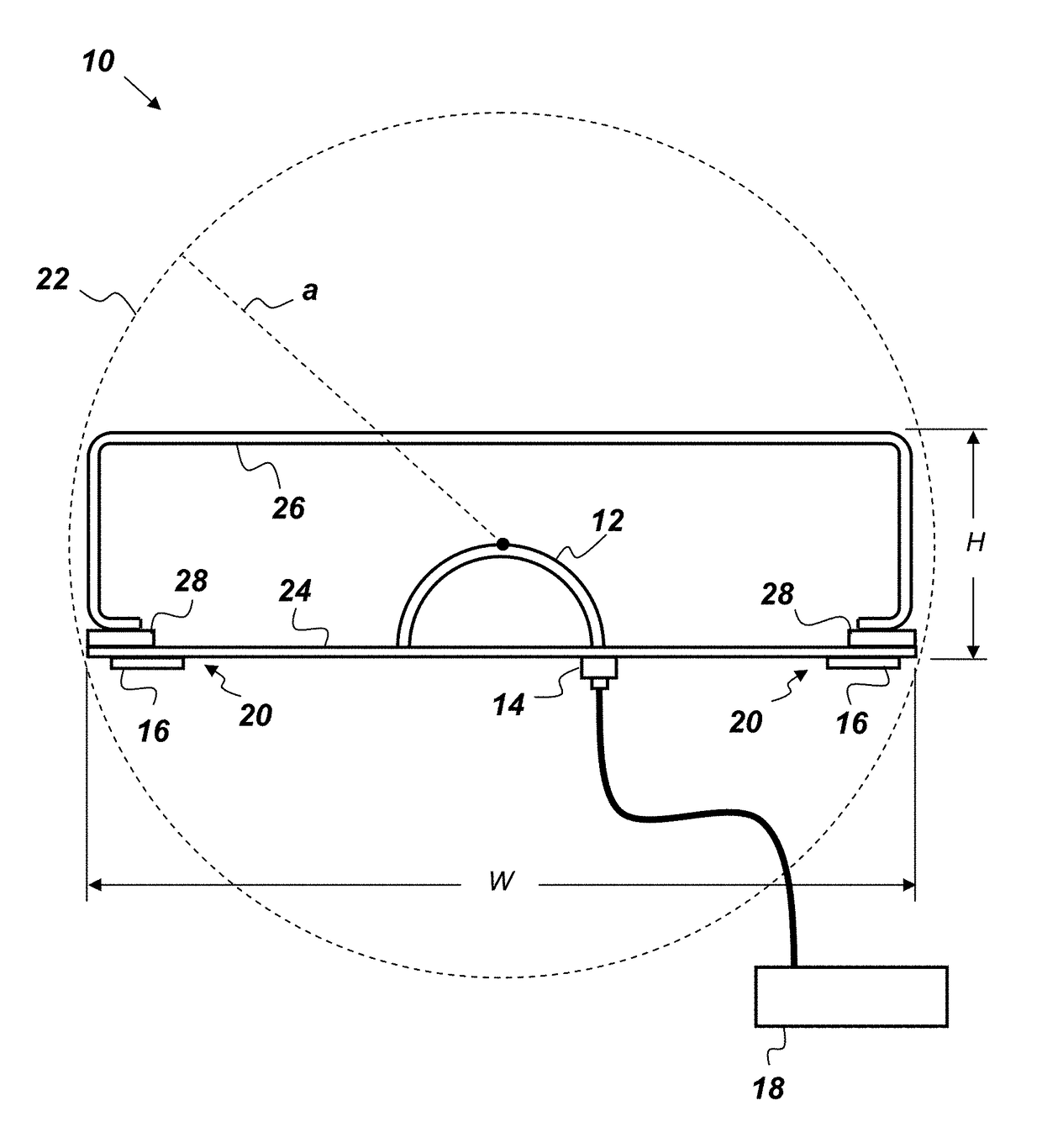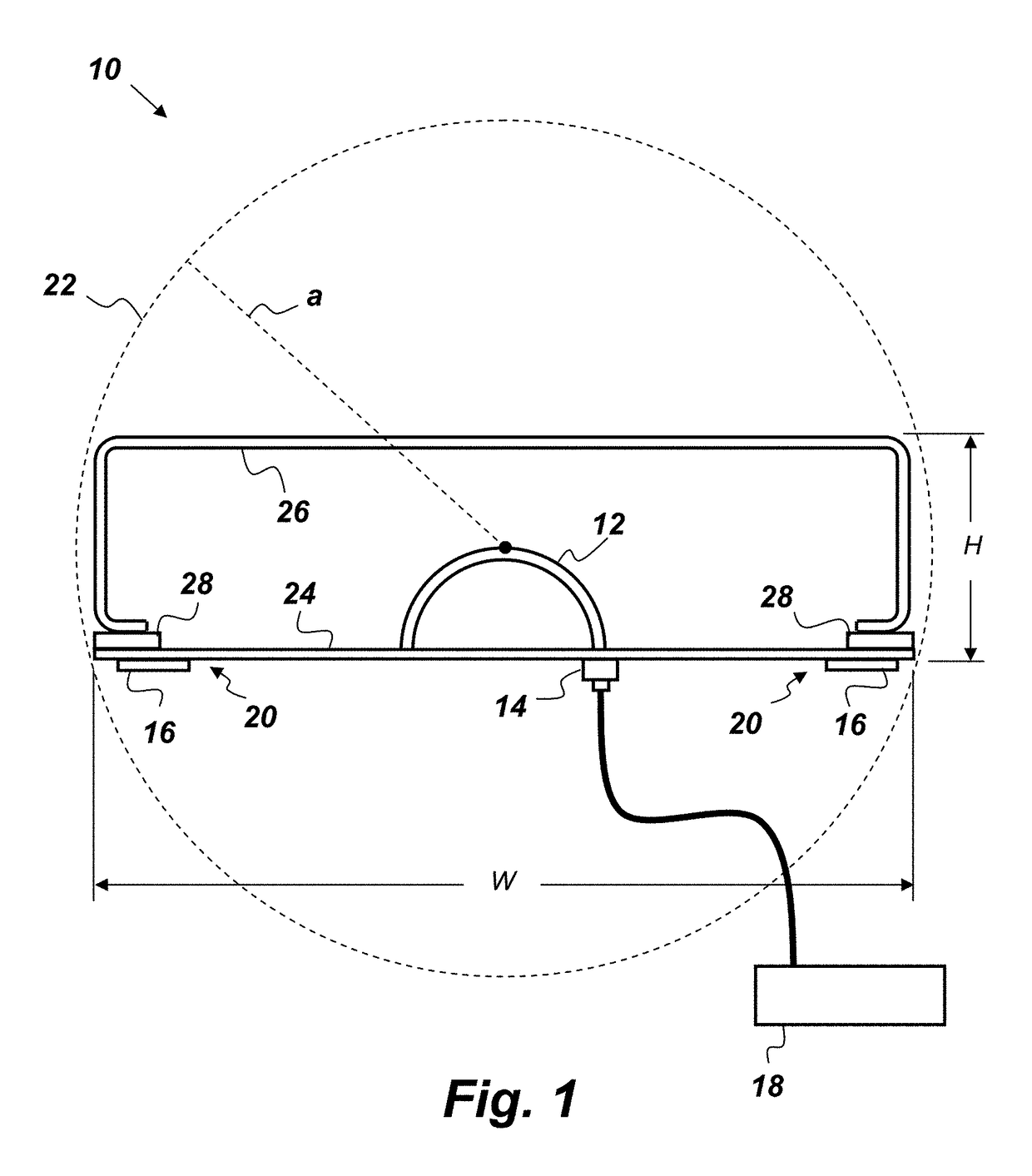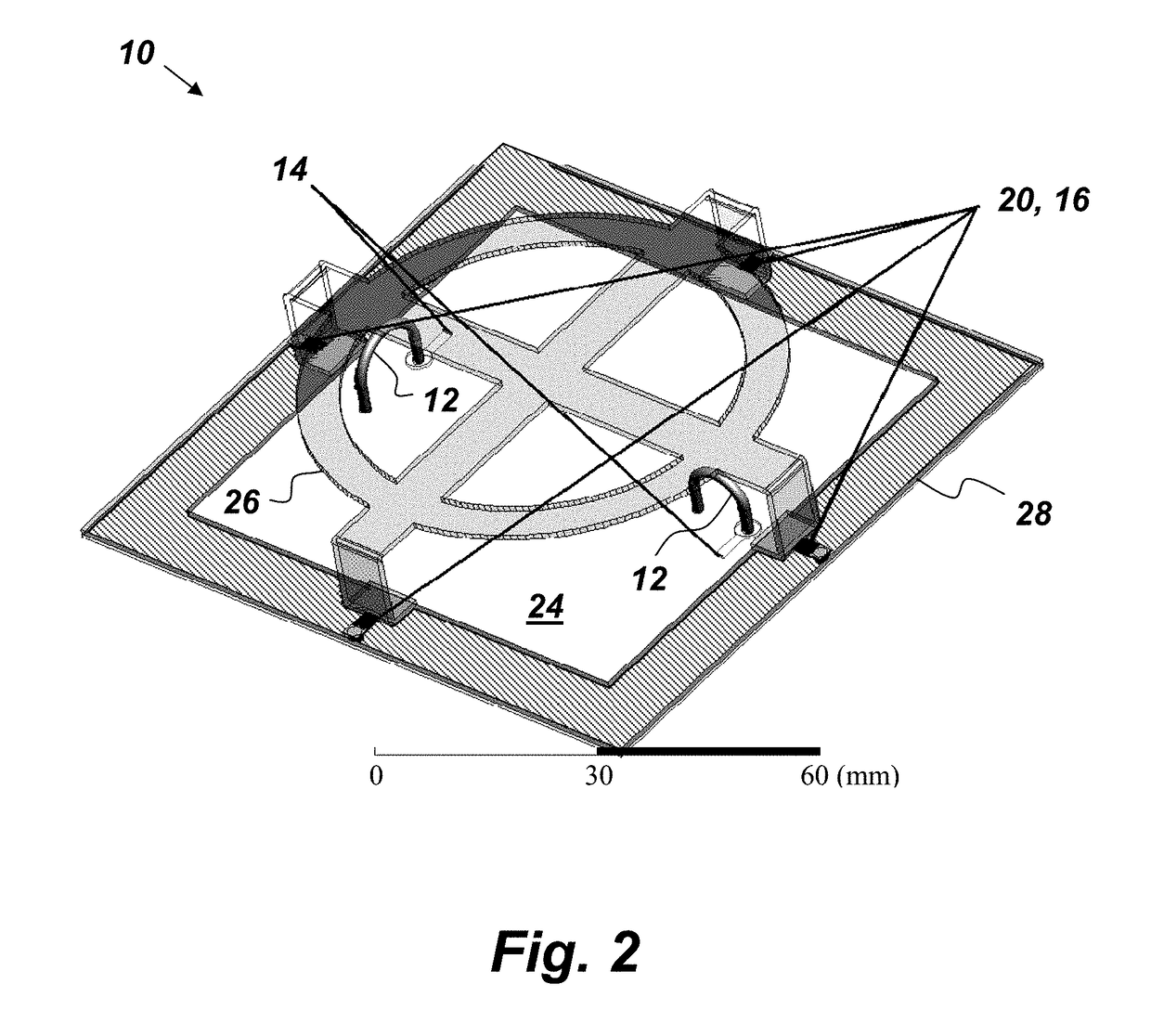Non-foster active impedance circuit for electrically small antennas
an active impedance circuit and antenna technology, applied in the direction of loop antennas, polarised antenna unit combinations, radiating element structure forms, etc., can solve the problems of limited application of efficient esas and often impracticality of conventional full-size antennas at these frequencies
- Summary
- Abstract
- Description
- Claims
- Application Information
AI Technical Summary
Benefits of technology
Problems solved by technology
Method used
Image
Examples
Embodiment Construction
[0018]The disclosed methods and systems below may be described generally, as well as in terms of specific examples and / or specific embodiments. For instances where references are made to detailed examples and / or embodiments, it should be appreciated that any of the underlying principles described are not to be limited to a single embodiment, but may be expanded for use with any of the other methods and systems described herein as will be understood by one of ordinary skill in the art unless otherwise stated specifically.
[0019]FIG. 1 is a side-view illustration of an electrically small antenna (ESA) 10 that comprises, consists of, or consists essentially of a driven element 12, an input feed 14, and a non-Foster circuit 16. The driven element 12 may be coupled to the input feed 14 and the input feed 14 may be configured to be connected to a receiver 18. The non-Foster circuit 16 has a negative impedance and may be configured to actively load the ESA 10 at a location 20 on the antenna...
PUM
 Login to View More
Login to View More Abstract
Description
Claims
Application Information
 Login to View More
Login to View More - R&D
- Intellectual Property
- Life Sciences
- Materials
- Tech Scout
- Unparalleled Data Quality
- Higher Quality Content
- 60% Fewer Hallucinations
Browse by: Latest US Patents, China's latest patents, Technical Efficacy Thesaurus, Application Domain, Technology Topic, Popular Technical Reports.
© 2025 PatSnap. All rights reserved.Legal|Privacy policy|Modern Slavery Act Transparency Statement|Sitemap|About US| Contact US: help@patsnap.com



